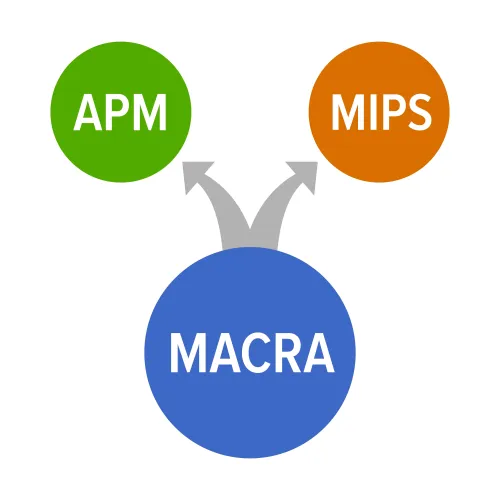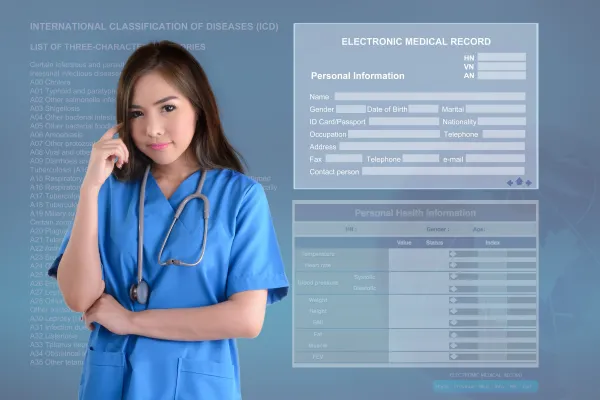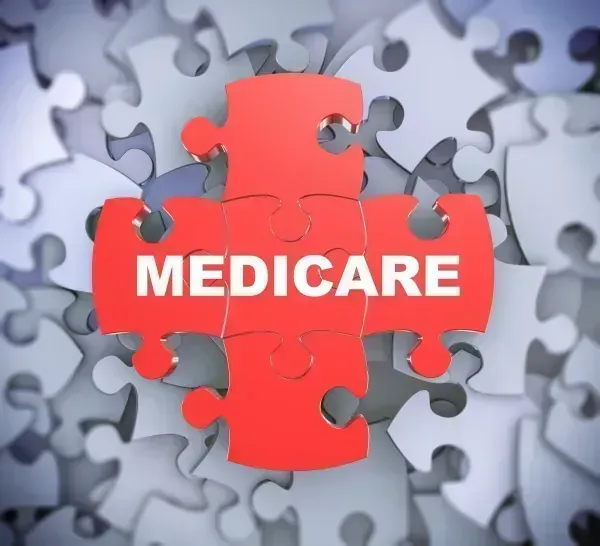Are You Eligible to Report Measures in a Virtual Group? Find Out Here

If reporting under MIPS has you worried, a Virtual Group might be for you. Medicare Part B providers are still struggling with the transition from the Sustainable Growth Rate system to the Quality Payment Program. So it's no surprise that CMS sees its Virtual Groups' outline for eligible clinicians under MIPS as the easiest way for smaller practices to reap Medicare riches and report measures en masse with other solo practitioners or small groups. But sometimes banding together causes more headache than it's worth - especially for many unfamiliar with this new payment system. Background: With the best intentions to aid and assist smaller practices adapt to the pressures of the Quality Payment Program (QPP), MACRA mandated Virtual Groups in its 2017 final rule last October. This past June 2017, CMS published its 2018 proposals for MACRA in what the agency is calling the "Quality Payment Program Year 2," vaguely outlining and defining this "virtual" option available for providers who fall under the Merit-Based Incentive Payment System (MIPS). Though the language suggests that the Virtual Group option is all about boosting the solo practitioner, some aren't so sure. "Virtual Groups are not a case of CMS championing the little guy," explains Mike Schmidt, Director of Certification and Client Success at Eye Care Leaders in Charlotte, North Carolina. "Congress had already required Virtual Groups in MACRA, and CMS had no choice." Peruse New MIPS Status Criteria for Virtual Clarification The QPP replaced the Sustainable Growth Rate (SGR) system of Medicare payment in 2017, but many providers are still a little fuzzy on the details of the transition. Due to the confusion, CMS has pulled back some of its requirements under MIPS, the basic entryway into the payment program. And in order to join a Virtual Group in 2018, you must know if you qualify for MIPS in the first place. Now: If you bill Medicare Part B more than $30,000 in payments a year and see more than 100 Medicare Part B-enrolled patients annually, then you are required to report measures under MACRA - for CY 2017. However, if you don't meet this year's low-volume threshold, you are exempt from reporting for 2017 and can avoid the 4 percent penalty to your reimbursements paid out in 2019. CMS was late letting clinicians know if they even qualified for the program, however, which suggests why they may have lowered the bar on the threshold. The data that CMS uses to determine providers' "low-volume status" for the 2017 MIPS performance period and the 2019 MIPS payment year comes from the following "evaluation periods," according to the MIPS participation fact sheet: Discover your 2017 MIPS status with your National Provider Identifier (NPI) number at: https://qpp.cms.gov/participation-lookup. 2018: Under the QPP Year 2 proposed rule, the low-volume threshold would be increased, easing the burden substantially. To be subject to MIPS in 2018, the proposal suggests 200 Medicare Part B beneficiaries or $90,000 in Part B allowed charges be the new threshold. CMS attributes the major shift in requirements to the public outcry on the quick transition of an untested Medicare payment model with "more than 100 stakeholder organizations and over 47,000 people since January 1, 2017," notes the QPP Year 2 fact sheet. "CMS will continue to listen and take actionable steps towards alleviating burdens and improving health outcomes for all Americans that we serve," said CMS Administrator Seema Verma in a release on the proposals. What Are Virtual Groups? The 2018 MACRA proposed rule presents the option for smaller practices to join up and submit MIPS measures together as a larger Virtual Group. "Our goal is to make it as easy as possible for Virtual Groups to form no matter where the group members are located or what their medical specialties are," the QPP Year 2 fact sheet says. Here is a quick overview of what CMS proposes: Caveat: Though the Virtual Group option allows clinicians to report together across the four performance categories – Cost, Quality, CPIA, and ACI – CMS still requires the contenders to meet the status thresholds as sole providers or in their small group practices. Many of these clinicians don't even know about MIPS, let alone understand what a Virtual Group is. "I don't think anyone, including CMS, has a good sense of how many individuals and small groups will take advantage of the Virtual Group participation option under MIPS," says attorney Benjamin Fee, Esq. of Dorsey and Whitney LLP in the Des Moines, Iowa office. "While the formal formation requirements are relatively minimal for Virtual Group participation, my sense is that few groups or practitioners who would be eligible are even aware of the option." Reality: The CMS minutiae about how Virtual Groups form, what they must entail, and how they will work is very unclear in the proposed rule. Advocacy groups cheer the idea and its promise to assist small practices, but want more clarification, particularly to ensure that fraud and abuse don't occur. "MGMA is concerned that the lack of a framework for virtual groups has the potential to create significant confusion and uncertainty about the interaction between this concept and the federal self-referral and anti-kickback laws, as well as anti-trust rules," indicates Anders Gilberg, MGA, Senior Vice President of Government Affairs at Medical Group Management Association in an open letter. "Virtual Groups will be in conflict with other mitigation measures which CMS proposed (such as the small practice bonus, ACI significant hardship exclusions, reduced requirements for Improvement Activities, etc.) in case the total size of the Virtual Group exceeds 15 providers," Schmidt warns. One bonus: CMS data suggests that the application process for Virtual Groups will be streamlined. "It [the application] could be used to aggregate all the TINs of a larger practice into a single reporting entity, with the constraint that each TIN is not allowed to exceed 10 providers," mentions Schmidt. "However, the tradeoff between ease of reporting at the practice level versus leveraging the various small practice scoring benefits, the latter is sure to win." Deadline: CMS is no longer taking stakeholder input on the QPP Year 2 proposed rule as the window has closed for public comments, but that doesn't mean you shouldn't investigate this opportunity now. "Clinicians need to elect to be in a Virtual Group via a written notice to CMS by December 1st for performance year 2018 and the final rule likely won't be published until this fall," advises Fee. And as the date is fast approaching, interested clinicians should contact CMS or their state QPP support network for assistance and advice. Resources: For a closer look at CMS guidance on the QPP Year 2 proposed rule for 2018, visit https://qpp.cms.gov/docs/QPP_Proposed_Rule_for_QPP_Year_2.pdf. To find out what QPP, small and underserved practice resources there are in your state, visit https://qpp.cms.gov/about/small-underserved-rural-practices.




